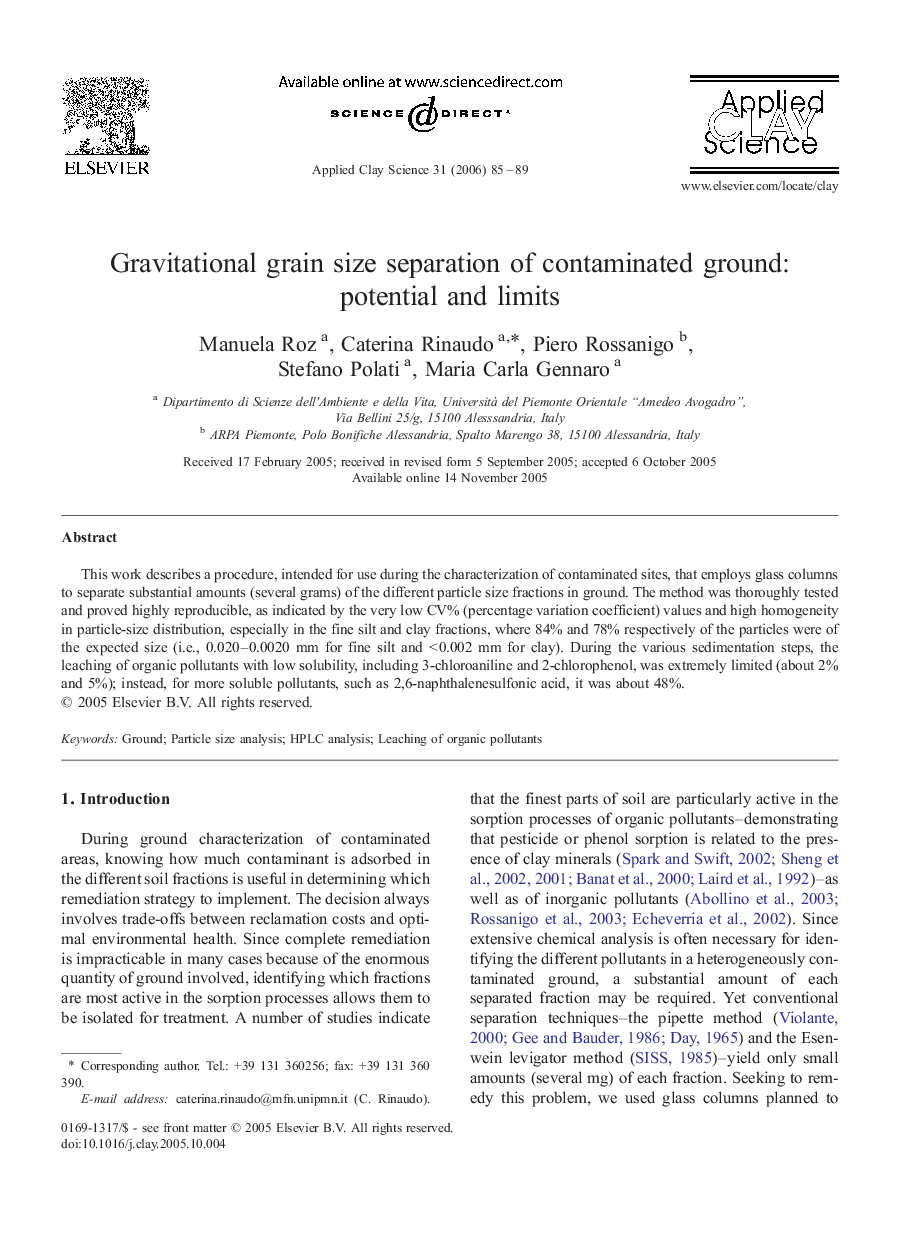| Article ID | Journal | Published Year | Pages | File Type |
|---|---|---|---|---|
| 1696771 | Applied Clay Science | 2006 | 5 Pages |
This work describes a procedure, intended for use during the characterization of contaminated sites, that employs glass columns to separate substantial amounts (several grams) of the different particle size fractions in ground. The method was thoroughly tested and proved highly reproducible, as indicated by the very low CV% (percentage variation coefficient) values and high homogeneity in particle-size distribution, especially in the fine silt and clay fractions, where 84% and 78% respectively of the particles were of the expected size (i.e., 0.020–0.0020 mm for fine silt and < 0.002 mm for clay). During the various sedimentation steps, the leaching of organic pollutants with low solubility, including 3-chloroaniline and 2-chlorophenol, was extremely limited (about 2% and 5%); instead, for more soluble pollutants, such as 2,6-naphthalenesulfonic acid, it was about 48%.
